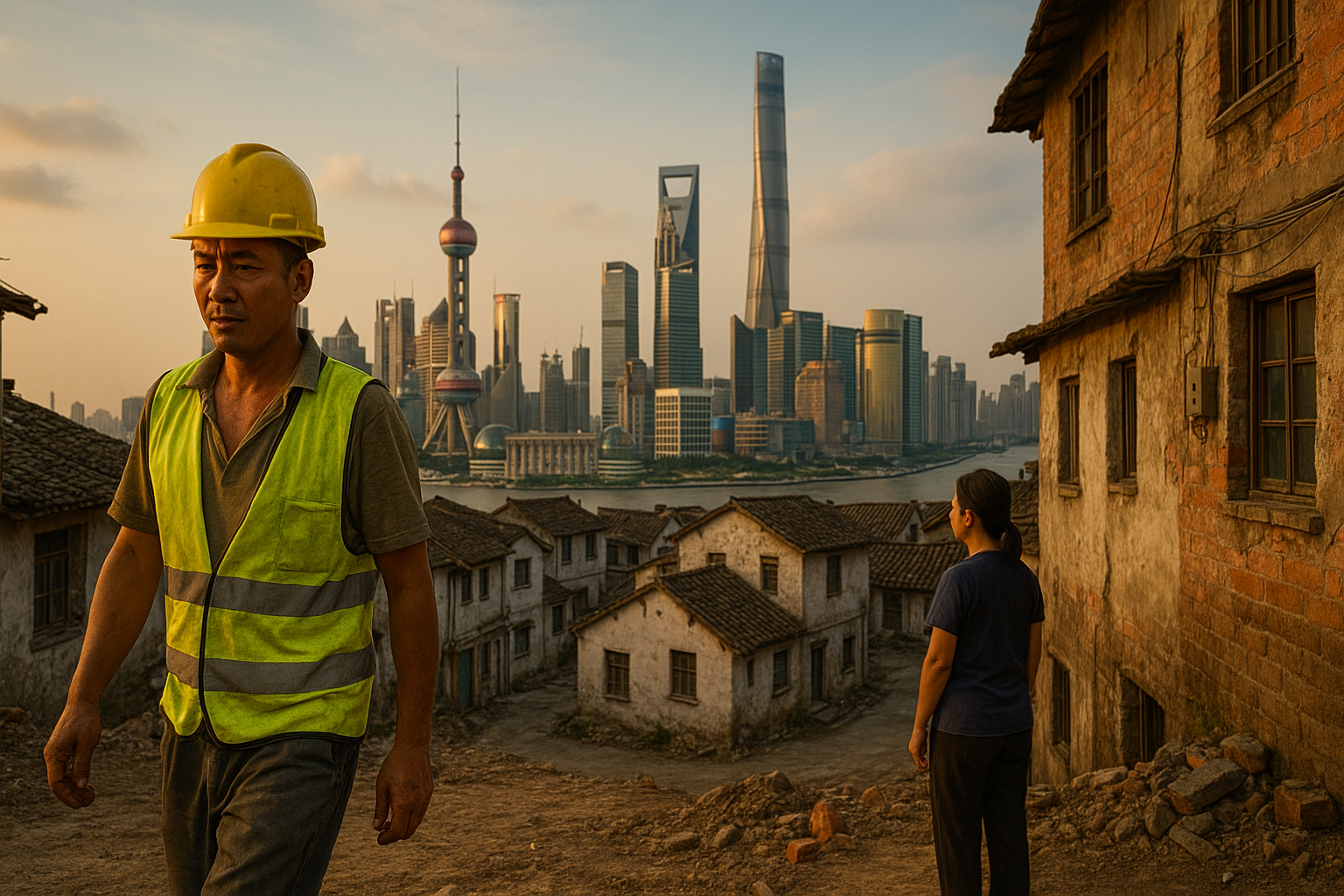From Growth to Equity: ADB Urges China to Tackle Inequality Through Structural Reforms
The report by the Asian Development Bank and China’s Development Research Center reveals that while decades of market reforms have lifted millions from poverty, they have also deepened inequality across regions, classes, and generations. It calls for bold fiscal, labor, and social reforms to achieve “common prosperity” and ensure that China’s growth becomes more inclusive and sustainable.

The report "Income Inequality in the People's Republic of China", prepared by the Asian Development Bank (ADB) in collaboration with the Development Research Center of the State Council, offers a compelling portrait of how four decades of economic transformation have lifted China to global prominence while deepening its internal divides. Since the late 1970s, market reforms and rapid industrialization have powered one of the world's most remarkable growth stories, pulling hundreds of millions out of poverty. Yet the same policies have created stark gaps between regions, social groups, and generations. The study traces how the early phase of "growth with equity" evolved into "growth with disparity," as coastal regions surged ahead and the benefits of prosperity became unevenly shared.
From Collective Egalitarianism to Uneven Prosperity
In the early years of reform, China's rural collectives and egalitarian land policies ensured relatively broad-based growth. As privatization accelerated, however, economic dynamism concentrated in coastal provinces such as Guangdong, Jiangsu, and Zhejiang. These regions harnessed export-oriented industries, foreign investment, and infrastructure advantages, leaving interior and western provinces behind. The hukou (household registration) system became a key institutional barrier, preventing rural residents from freely migrating or accessing urban welfare. Rural migrants, though central to China's industrial rise, often remained excluded from education, healthcare, and housing benefits, perpetuating an underclass of low-paid, insecure labor.
Forces Behind the Divide
The report attributes China's widening income inequality to a blend of geographic, institutional, and market-driven factors. Regional disparities are the most visible, but urban–rural gaps remain deeply entrenched. Even as rural incomes rise faster in percentage terms, productivity and access to public services remain heavily skewed toward cities. Technological advancement and globalization have further magnified skill premiums, rewarding the educated and leaving the unskilled behind. Education has become the strongest predictor of income: returns to schooling in China now approach those in advanced economies. Meanwhile, gender gaps persist, with women earning less and concentrated in lower-wage sectors, and intergenerational mobility remains limited as children from poor families inherit their parents' economic disadvantages.
Fiscal Reforms and Unequal Outcomes
Fiscal decentralization, introduced to spur efficiency and accountability, has instead intensified inequality in public services. Wealthier provinces and municipalities, supported by stronger tax bases, provide better schools, hospitals, and infrastructure, while poorer regions struggle to meet basic needs. The report's data show that China's fiscal redistribution through taxation and social transfers remains far weaker than in OECD countries. Personal income tax plays only a limited redistributive role, and social transfers, though expanding, have not significantly narrowed the gap. The study calls for stronger equalization transfers to redistribute central revenues to lagging regions and strengthen their capacity to deliver essential services. Such reforms, it argues, are crucial to aligning economic efficiency with social equity.
A Blueprint for Shared Prosperity
The report outlines a comprehensive policy roadmap to make growth more inclusive. It urges the completion of hukou reform to enhance labor mobility, allowing rural workers equal access to urban opportunities and welfare. It also recommends deepening tax reforms by expanding progressive taxation, introducing property and inheritance taxes, and improving compliance to close revenue leakages. Expanding public spending on education, healthcare, and pensions, particularly in underdeveloped provinces, is presented as essential to breaking the intergenerational transmission of poverty. According to simulations presented in the study, a coordinated strategy combining labor market reform, fiscal redistribution, and social spending could significantly reduce China's Gini coefficient within a decade.
Balancing Growth and Equity
The final sections of the report convey both warning and optimism. China stands at a turning point where reducing inequality has become not only a social necessity but also an economic one. Sustaining domestic consumption, maintaining social cohesion, and supporting stable long-term growth will depend on narrowing these divides. The government's emphasis on "common prosperity" reflects a growing recognition that prosperity without equity undermines the legitimacy of the development model itself. The authors conclude that inequality is not an inevitable byproduct of growth but a correctable outcome of policy design. By tackling structural and institutional imbalances, China can transform its success story into one of truly shared progress, where the benefits of modernization reach every citizen, regardless of where they are born or whom they work for.
- FIRST PUBLISHED IN:
- Devdiscourse
ALSO READ
-
Diplomatic Dance: Germany and China Seek Common Ground Amid Rising Tensions
-
Wall Street Soars on U.S.-China Trade Truce Hopes Amid Big Tech Earnings
-
Bridging Diplomatic Gaps: A New Era for China-U.S. Relations?
-
Dollar Falters as U.S.-China Trade Deal Gains Traction Among Central Bank Deliberations
-
Global Stocks Rally Amid U.S.-China Trade Deal Optimism









